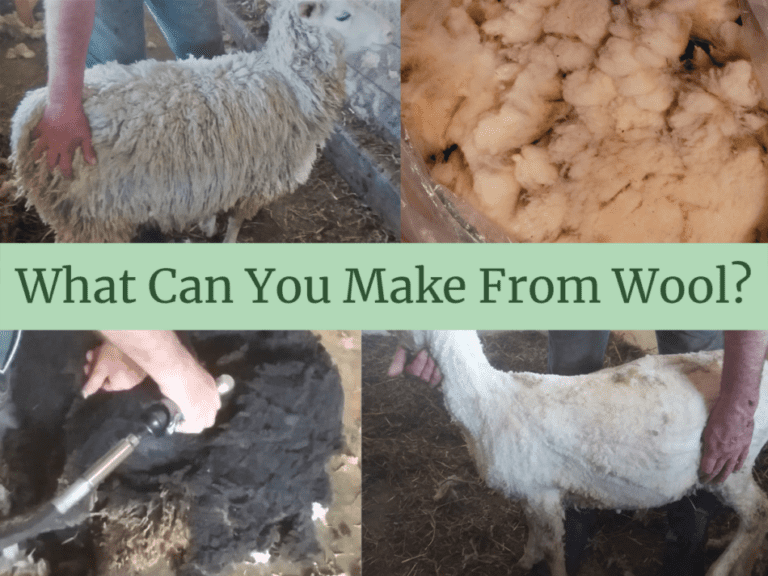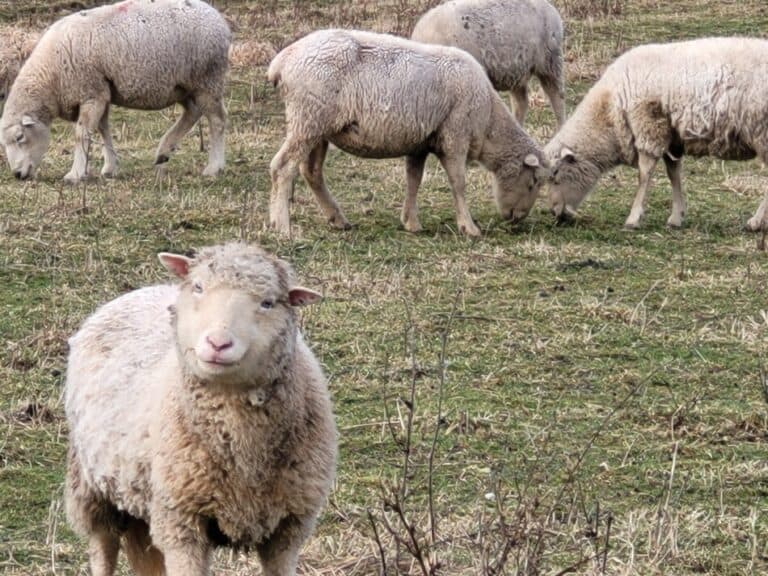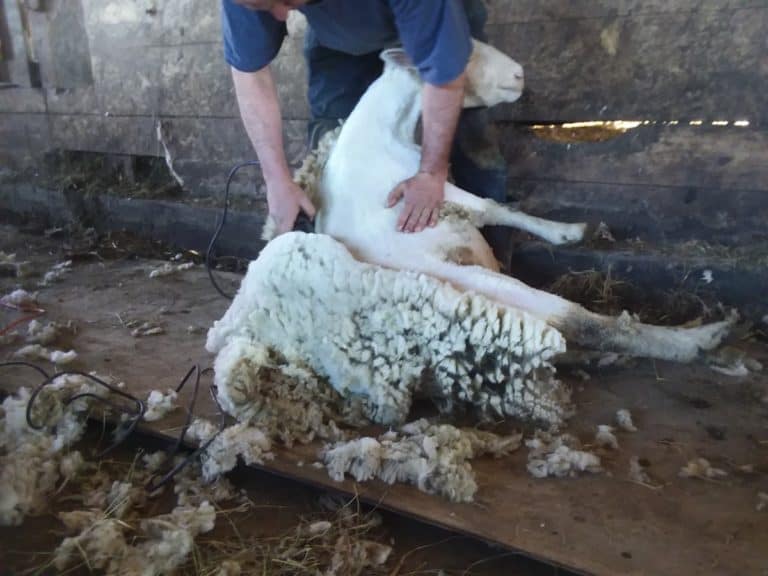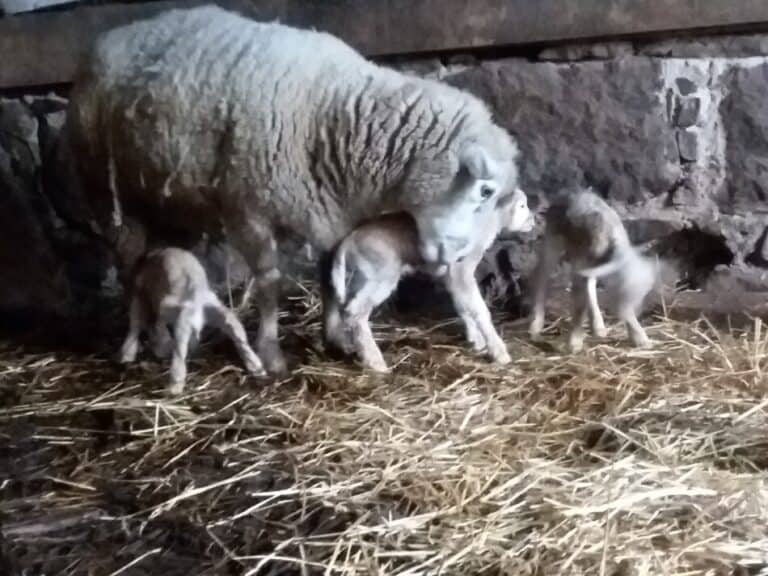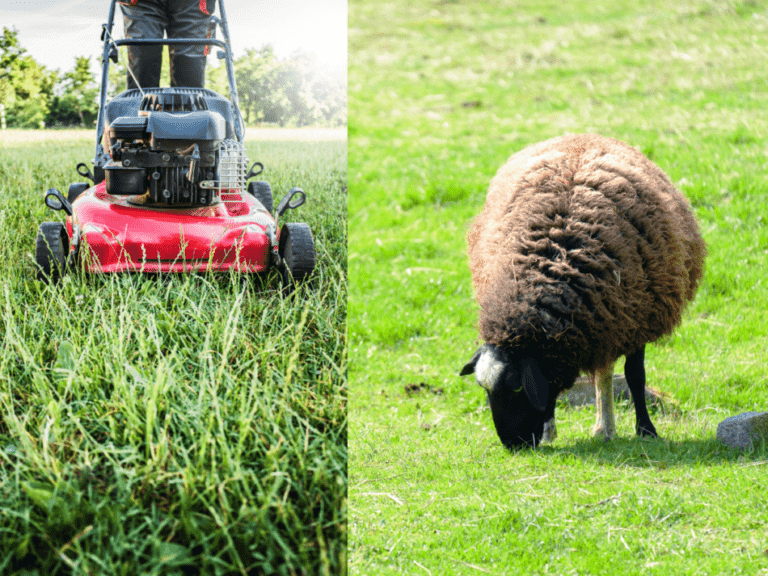Lambing Time Supply List: What You Really Need And What You Don’t
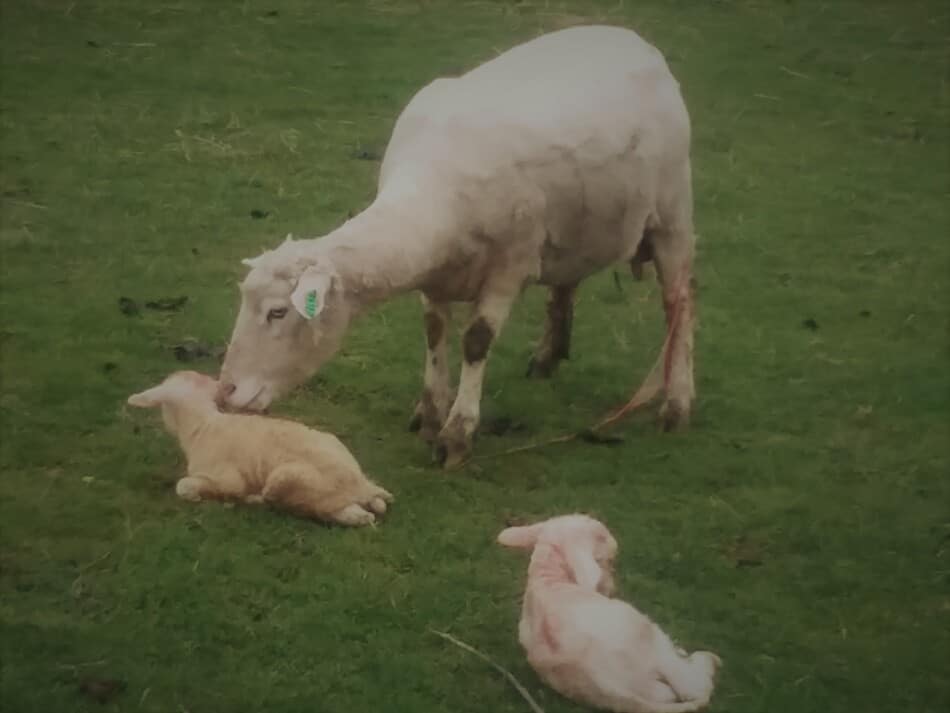
Lambing supplies are advertised every where as “must have” items. Some are essential and others, not so much.
Here is our list of the items we keep on hand and why.
The minimum basic lambing supplies to have on hand are:
- heat lamps and new bulbs (check that the lamp works and have extra bulbs)
- screw on lamb nipple and bottle (buy new nipples each year)
- spray marking paint
- extra gates
- extra buckets
- a rope halter
We tend to keep things simple at lambing, especially since most of our lambs are born on pasture. We don’t like to tote a pack of supplies around with us.
If your lambs are born inside, you will find it easier to do more with them, should you choose.
Sheep For Profit gives you a budget for raising sheep the way we do (mostly pasture based) and shows you how to find the numbers that apply to your area.
If your lambs are born on pasture, like ours, all of the processing many inside sheep raisers do will be difficult to accomplish until you bring the flock in to the working/sorting area.
For anyone with registered sheep, you will need to do some identification work in the lambing area, where ever that is for your sheep.
If you have not selected your starter flock of sheep yet, read my article Find The Right Sheep Breed For You to get started!
Our lambing barn supply list
- Rope Halter
- Screw on lamb nipple and bottle, we use Pritchard teats
- Spray marking paint
- Heat lamps
- Stomach tube
Keep a rope halter handy for lambing time
While a rope halter is not specifically for lambing, we use it year round, it is handy to have.
This year we used multiple halters to help graft bottle babies on to foster moms. The halter is to tie the ewe for nursing for the first few days, until she decides to like and care for the new to her lambs.
We also had a ewe this year that liked one of her lambs but not the other one. She was haltered up three or four times a day for a few days to allow the other lamb time to nurse.
The best lamb nipples are Pritchard teats
Pritchard teats are the red nipples with the yellow base that screw on to a plastic one liter or half liter size pop bottle.
These are the best nipples to buy for bottle baby lambs. There are other lamb nipples available in most farm supply stores, however, none work as well for us as the Pritchard teats.
Plus, the fact that they screw on to a used plastic pop bottle (so you don’t need to buy the bottle) helps keep costs down.
We find that after using the plastic pop bottle for a few weeks it starts to suck in out of shape. Just replace it when this starts to happen, the lamb will be able to nurse better with a “new” bottle.`
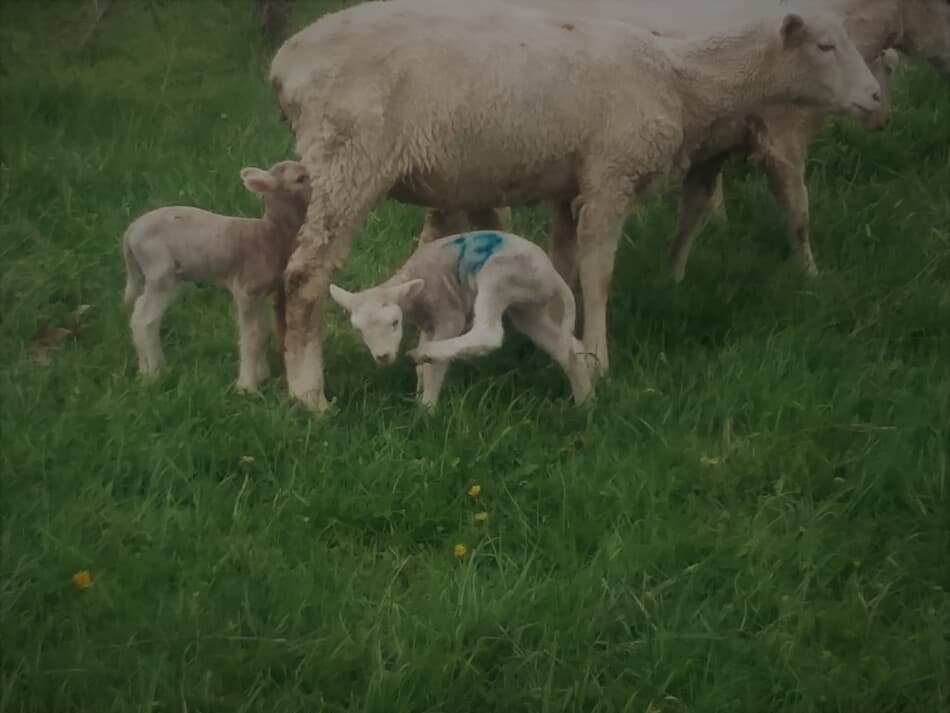
Buy some spray marking paint to number the lambs and ewes
Spray marking paint is great! It lasts, gives you the ability to make clear multi number markings and works on shorn or unshorn sheep. The can seems to last for a high number of uses, as well.
The only caution here is an “iffy” ewe will not care for babies coming back to her smelling like spray paint.
We had a few ewes in the field seem to question if that new smell is still her lamb. None of the ewes rejected marked lambs, but a few had to think about things before deciding it was acceptable.
We only marked lambs and ewes that were needing monitored, to make it easy to specifically find them during the periodic walk through the flock checking.
For the most part, the good performers never got marked, they didn’t need the extra monitoring.
I’m not sure if the ewe questioning the lamb was due to the different smell of the marking paint or the fact that this particular ewe and her lambs needed marked in the first place.
If you are questioning buying the spray marking paint, buy it! We love it! It’s one of the best $10 purchases for the sheep that we have made and it has plenty of non lambing season uses, as well.
We use heat lamps for lambs that need a warm up
Heat lamps are another hope to not need them item that we are super glad to have when we want it.
Sometimes, just an hour or two under the lamp will be all a chilled baby needs to come around and be fine from there on out.
A few cautions: some ewes will not tolerate the lamp. Once the lamb stands the lamp needs to be higher or the baby will burn itself. Don’t take this lightly, the burns can be severe.
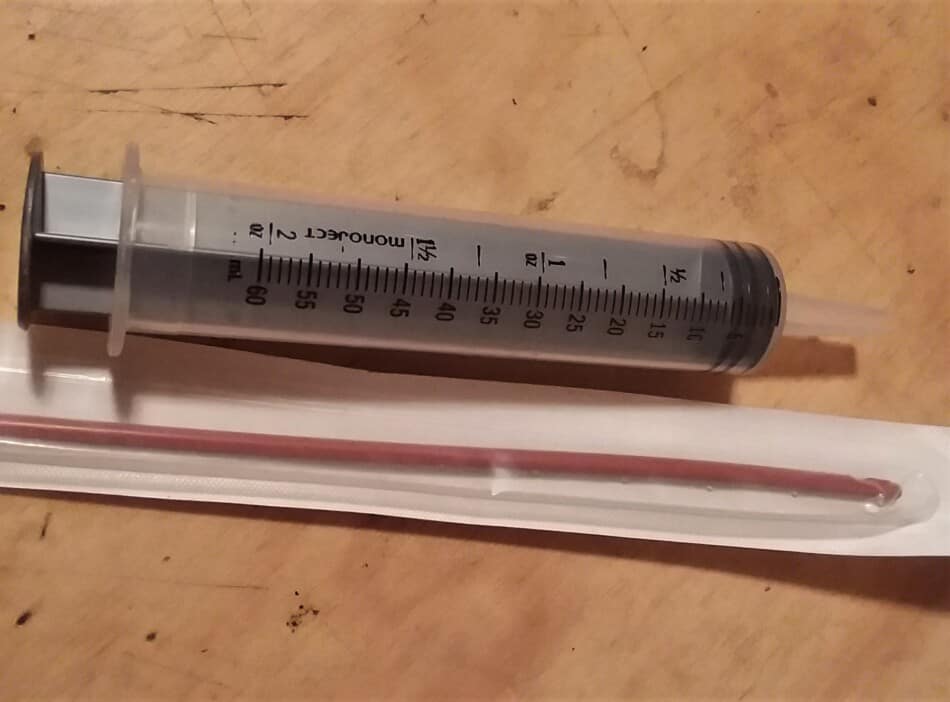
Get a stomach tube to feed warm lambs that are poor nursers
I must admit, the stomach tube was in the “we don’t use it section”, until this year! This spring we used the tube on any lamb that was warm but not aggressively nursing the bottle.
It worked great and saved us a ton of frustration. For a lamb that is warm, but too weak to nurse adequately, a stomach tube will allow you to feed him until he gets more energy and can nurse a bottle himself.
Do not give milk to a lamb that is cold, he can not process the milk until his body temperature is up to normal. If your lamb is cold, he doesn’t need milk, he needs heat. Feeding him can wait until his body temperature is up.
Sheep 101 has an interesting article on getting ready for lambing. Click around, this is a great site.
New lambing supplies that work great
- Scale
A scale is not a lambing supply, strictly speaking. I included it here because it is very useful in evaluating which ewes are performing the best, basically by helping you determine milking ability.
The scale is great for figuring out replacement ewe selections. So far, we have noticed that for the most part a higher birth weight lamb performs better overall. We have had a few exceptions, but it’s a good place to start.
Let me be clear, we do not weigh lambs that are born out in the field. You certainly could, but we don’t.
The scale is being used to get weights, birth, 30 day and 60 days, from lambs in an early lambing group that is in the barn.
Update: we didn’t use the scale at all this year. It just didn’t seem worth the effort since any lambs born at the barn this year were not potential breeding stock, so we don’t need this information.
All the lambs we would want this type of information from we out on pasture and we did not take the scale out to get data on them this year. Birth weight is interesting, but not vital for us and our operation.
Lambing supplies we buy as/if needed
- Ewe spoon
Hopefully, you never need a ewe spoon, but when you do, it’s good to have quick access to one.
We have farm supply stores close to us, so we do not normally keep one on hand. If your ewes are shorn, you’ll need the harness, too.
The last time we needed a ewe spoon was a few years ago and, unfortunately, again this spring. I say unfortunately because a prolapse never goes well for us.
Despite time and care, these gals are tough to get better. And “better” is in sellable condition, she’ll never be really better. Prolapses get culled.
Some lambing items we can never have enough of!
- Gates
- Buckets
- Hay racks
- Cattle panels
You may not consider some or even most of these items as lambing supplies but I sure do!
Even though we do the majority of our lambing on pasture, there are a few that need to be brought in or the lambs will not live.
We lamb 300 head or so a year, so even if a small percent of them need to be brought inside, the numbers can add up quickly!
This section is all about portability and easy put up and take down lambing jugs.
We have all kinds of sheep sized gates all for lambing season. It seems like we can never have enough.
Buckets are the same way, we always are on the look out for a few more. The funny thing about buckets (and gates) is that we really don’t have that many sheep that need to be brought in. I
t all seems to happen in a short time period, that’s what depletes the extra buckets and gates!
We choose to put in a bit of extra effort and try to get all lambs to sellable weight, figuring it is better to gimp along a poor mom than to loose the money from selling the lamb.
That means having a place to put the not so great mom and her lambs. The majority of this section’s items are for lambing jugs to keep some order in the barn and make sure the lambs get the care they need.
The cattle panels are for catching a ewe in the field that will not just jump on the trailer when we put her lambs in.
Normally, a ewe will follow her lambs, but not always.
We had an “eventful” lambing season this year, cold rains nearly the entire time! It was unusual and tough on the sheep and us!
Our more normal weather would be either cold or rain but not together! Cold and rain together can quickly wipe out new or weaker lambs.
This crazy weather combination had us bringing in far more ewes and lambs than normal!
Some producers are of the “survival of the fittest” mentality and would not consider doing any of this “extra” work. We look at things differently.
Of course the goal is to have a flock that does not need our help with lambing, but we are not there yet.
As we cull our way to success, we want to sell, not bury, the lambs and ewes that are poor performers.
Sheep Creep Feeders shows you how to set up creep feeding for your lambs. The reason that is in this article is, if you are creep feeding the creep area should be set up when the first lambs are less than one week old!
Lambing supplies we do not use
- Shots or vaccines
- Iodine
- Any lamb pulling device
- Geographically specific shots like selenium
- Polypropylene glycol
We have not given shots or vaccines for years, however you may need to! Ask your vet for an area specific or better yet farm specific recommendation.
This is especially critical with the geographically based recommendations like selenium.
When you live in a mineral deficient area and raise livestock you need to correct known deficiencies or your lambs will have severe, but easily preventable, problems.
We do not treat navels with iodine. I know everything you read tells you iodine is essential, we have not found it to be needed on our farm.
If you are questioning using iodine, run this one by your vet and do some research.
We do not use any lamb pulling device. Usually if a lamb is in a difficult birth position it can be rotated with some patience.
Please heavily consider what you are doing and if it is needed when mechanically interfering with birth. Harsh methods are a hasty alternative to taking time to finesse the situation.
Learn to work with the ewe and the lamb and take your time.
